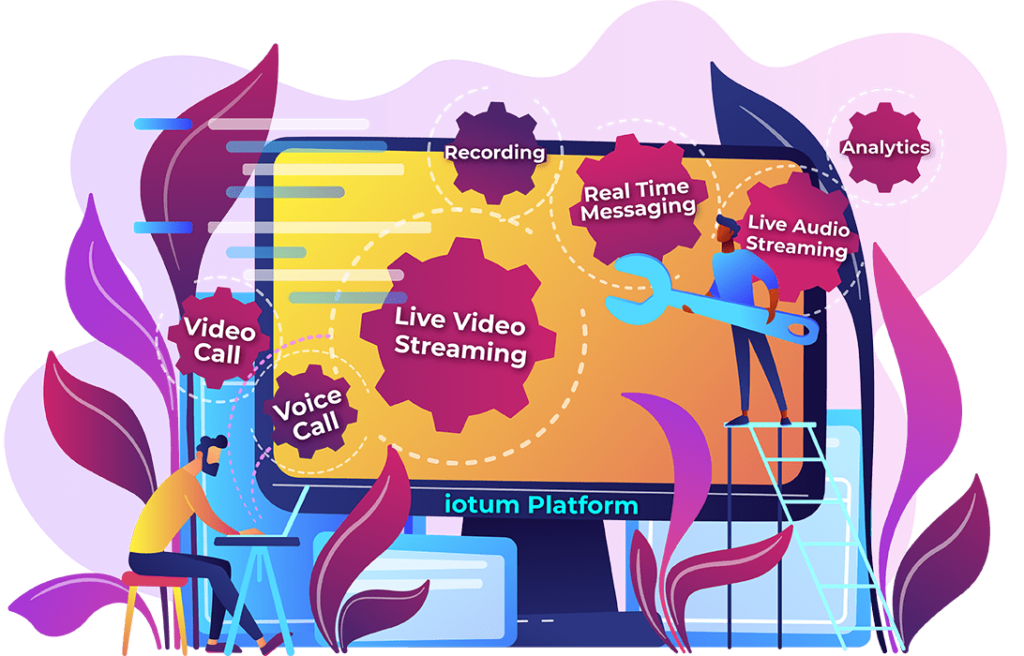 Just because we’re living in a new normal, it doesn’t mean students can’t escape the four walls of the classroom to see the world. In fact, that’s one of the biggest advantages of a virtual classroom – students now have the opportunity to experience far-off lands, different cities, and interesting locations in a way that’s safe and provides fantastic learning material.
Just because we’re living in a new normal, it doesn’t mean students can’t escape the four walls of the classroom to see the world. In fact, that’s one of the biggest advantages of a virtual classroom – students now have the opportunity to experience far-off lands, different cities, and interesting locations in a way that’s safe and provides fantastic learning material.
Curious to know how video conferencing can transform a virtual classroom (or any online learning environment) into a dynamic and visually engaging space? Want to how both educators and learners, of all ages, from junior school to post-grad can benefit from a virtual field trip?
Here are a few things you should know about how to teach in a virtual classroom when it comes to planning and executing virtual field trips:
- There Are Different Kinds
Consider how you want to take your class on a trip and what kind of trip you want to partake in. There are pre-recorded and live options, 360 degrees and flat image slides, and live streams that are already expertly led. You can find trips already tailor-made or you can put together your own, or you can do a mix of both! Simply find the visuals you want to explore, and speak over top using video conferencing capabilities like voice calling and screen sharing. - You Need Reliable Technology
To be able to share the virtual field trip, you will need video conferencing software that is easy to access and provides the services and features you can rely on. Voice and video chat, screen sharing, and moderator controls are must-haves. Secondary features include zero-download and browser-based tech, text chat, online whiteboard, and cloud storage that come together for a fast and easy, compelling user experience! - …And You Should Test It First!
Before hosting, check to ensure your camera, mic, and speakers are all in top-notch condition. Consider high-quality headphones for the best listening experience. Once you’ve checked to ensure everything is running smoothly on your end, ask students to double-check their gear. - Test The Excursion
See if you can run through the course of the trip before bringing it to your class. This will help you with pacing and knowing what information and touring points can be covered. Plus, you can plan breaks, topics of interest that complement the tour and have questions and answers ready for a smooth trip!
Here are a few ways that detail how to make online classes more interactive with virtual field trips:
 Get In Touch With The Local Community
Get In Touch With The Local Community
After you’ve selected the location you want to “visit,” consider how you can get in touch with a local or someone within the community who can show you around and take you on a tour! Can’t connect with someone living in the location you want to explore? With free video conferencing, your virtual classroom can open up to just about everywhere with curated tours, and well-designed trips that can take you into places you never thought possible! Try going on a walk through the Johnson Space Center or into Sơn Đoòng, the world’s largest cave in Vietnam.- Help Your Students Learn and Explore With a Virtual Classroom
Go further than just the virtual classroom with virtual field trips that bring students right into the action. Imagine being able to watch a live surgery in a first-class hospital’s operating room. Or experience a real-live active volcano at the foothills of an Icelandic mountain. It’s easy to almost feel like you’re there in real life when you can tune into a live stream and share it with the class using free video conferencing. Simply click the Screen Share option to bring everyone onto the same page. Got a YouTube live stream you want to share? Copy and paste the link in the chat box during a video chat or access it on your screen and screen share. It’s that simple and engaging!  “Travel” With Other Classes
“Travel” With Other Classes
Join forces with other classes all over the world to broaden your reach and open up networking opportunities. Become virtual pen pals or international classmates when you can meet each other in an online setting and connect to work on group projects, share opinions, and swap insights.- Share On-Location
Invite students to be their own news anchors by having them “report” what they are seeing and learning on-site. Using a green screen, stock 360 images, and video conferencing, they can be “on-location” in the arctic conducting interviews with polar bears, sharing the weather details of the sunny but chilly tundra they’re in. The creative and interactive learning possibilities are plentiful! - Go More Than Once To The Same Location
Each time you go, get students to point out and learn different things about the location. For example, if you went on a virtual excursion to a specific museum like the National Museum of History to walk around the Cyprus exhibit, the teacher can pull up the trip, screen share with video conferencing, and guide students on a curated tour, pointing out certain artifacts. Visit again, but get a student to lead this time. Let the student share what they learned about ancient pottery or a specific piece of art.
Let FreeConference.com assist you with your virtual classroom setup. Plan your next virtual field trip with free video conferencing software that grants you and your learners access to incredible places near and far. Just because you can’t physically go somewhere, it doesn’t mean somewhere can’t visit you! With a few simple features including Screen Sharing, and File and Document Sharing, FreeConference.com lets you uncover and explore museums, beaches, countries, and more with a few clicks. Get started now.


